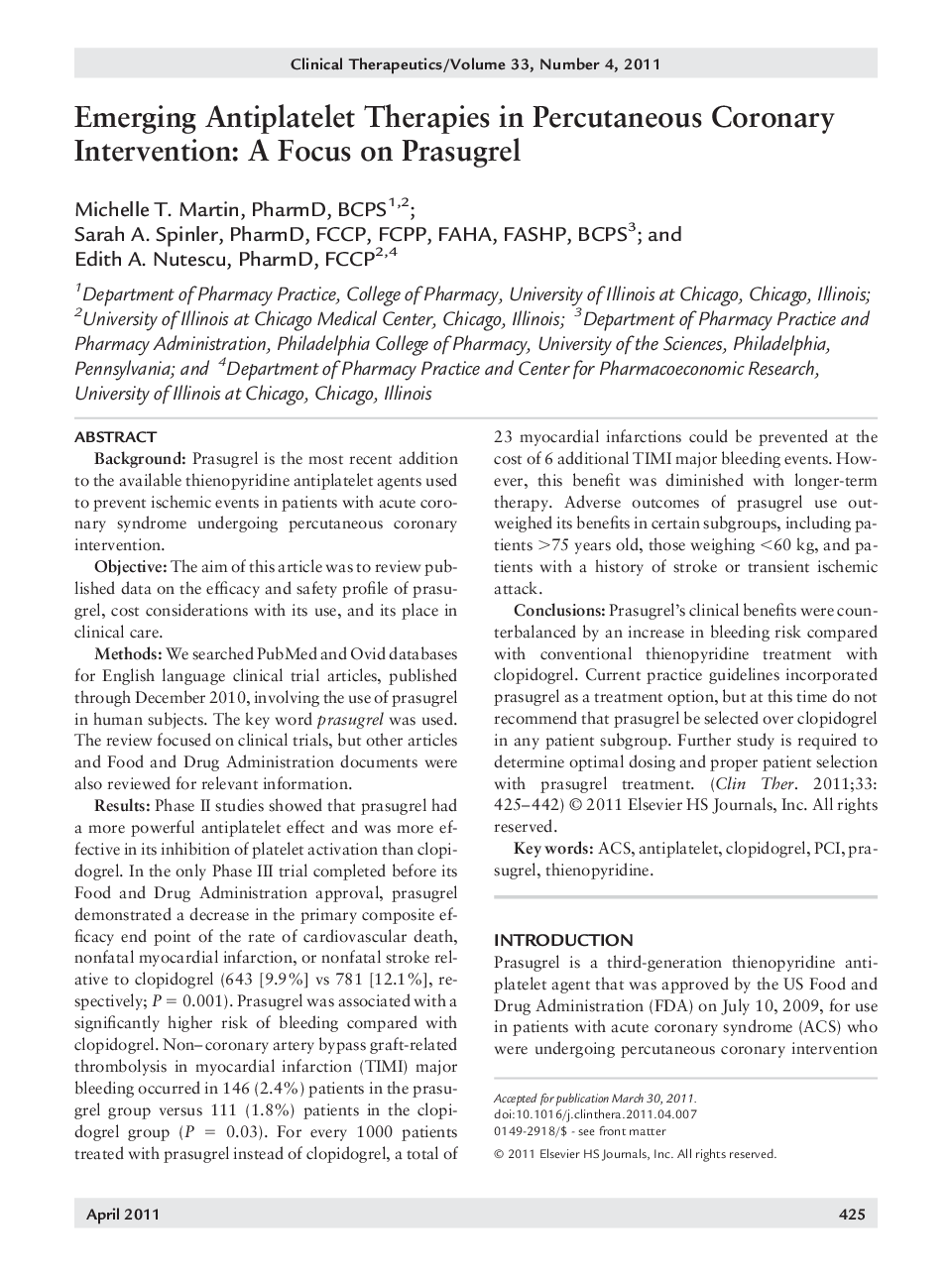| Article ID | Journal | Published Year | Pages | File Type |
|---|---|---|---|---|
| 2527630 | Clinical Therapeutics | 2011 | 18 Pages |
BackgroundPrasugrel is the most recent addition to the available thienopyridine antiplatelet agents used to prevent ischemic events in patients with acute coronary syndrome undergoing percutaneous coronary intervention.ObjectiveThe aim of this article was to review published data on the efficacy and safety profile of prasugrel, cost considerations with its use, and its place in clinical care.MethodsWe searched PubMed and Ovid databases for English language clinical trial articles, published through December 2010, involving the use of prasugrel in human subjects. The key word prasugrel was used. The review focused on clinical trials, but other articles and Food and Drug Administration documents were also reviewed for relevant information.ResultsPhase II studies showed that prasugrel had a more powerful antiplatelet effect and was more effective in its inhibition of platelet activation than clopidogrel. In the only Phase III trial completed before its Food and Drug Administration approval, prasugrel demonstrated a decrease in the primary composite efficacy end point of the rate of cardiovascular death, nonfatal myocardial infarction, or nonfatal stroke relative to clopidogrel (643 [9.9%] vs 781 [12.1%], respectively; P = 0.001). Prasugrel was associated with a significantly higher risk of bleeding compared with clopidogrel. Non–coronary artery bypass graft-related thrombolysis in myocardial infarction (TIMI) major bleeding occurred in 146 (2.4%) patients in the prasugrel group versus 111 (1.8%) patients in the clopidogrel group (P = 0.03). For every 1000 patients treated with prasugrel instead of clopidogrel, a total of 23 myocardial infarctions could be prevented at the cost of 6 additional TIMI major bleeding events. However, this benefit was diminished with longer-term therapy. Adverse outcomes of prasugrel use outweighed its benefits in certain subgroups, including patients >75 years old, those weighing <60 kg, and patients with a history of stroke or transient ischemic attack.ConclusionsPrasugrel's clinical benefits were counterbalanced by an increase in bleeding risk compared with conventional thienopyridine treatment with clopidogrel. Current practice guidelines incorporated prasugrel as a treatment option, but at this time do not recommend that prasugrel be selected over clopidogrel in any patient subgroup. Further study is required to determine optimal dosing and proper patient selection with prasugrel treatment.
